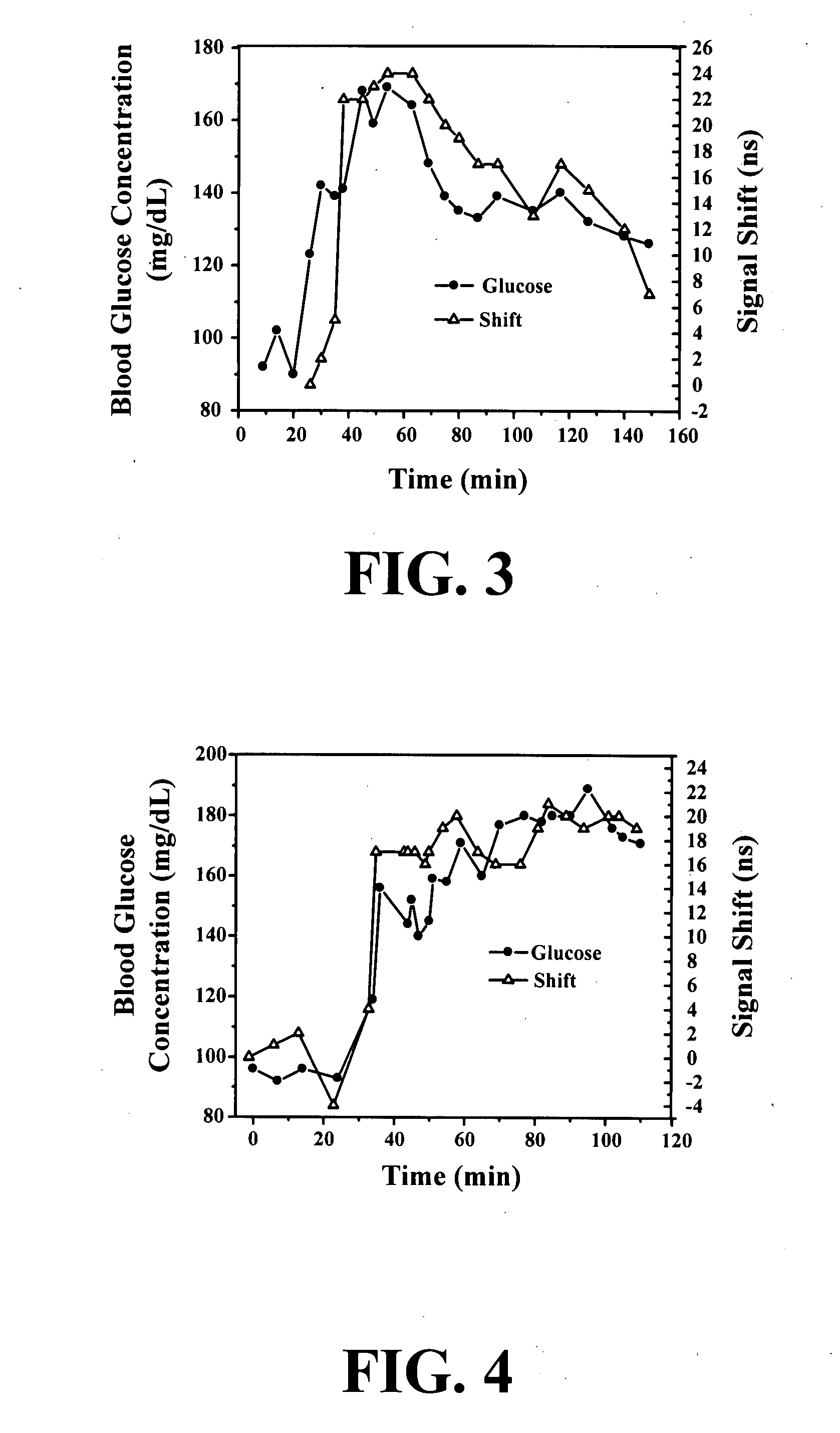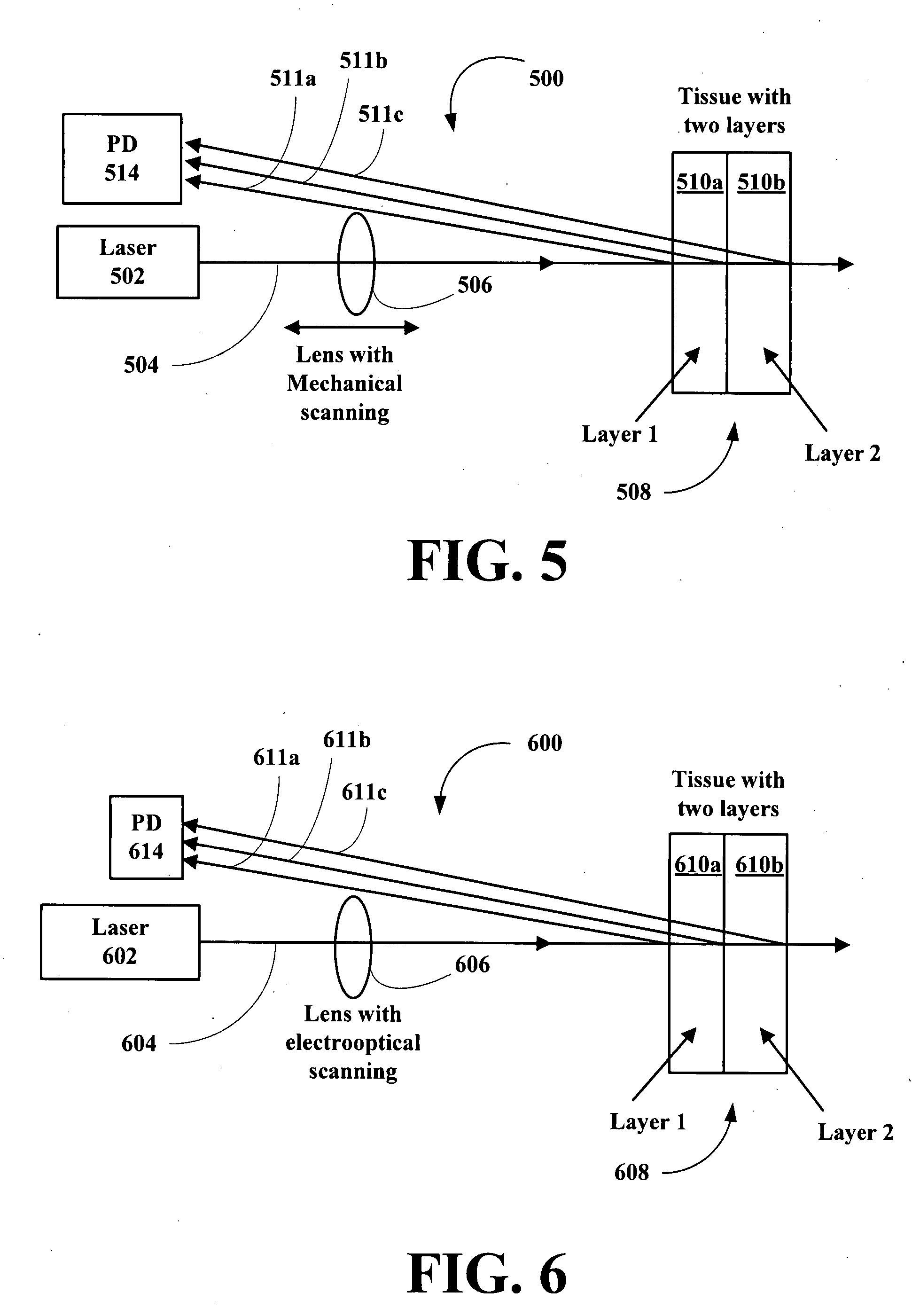Noninvasive glucose sensing methods and systems
a glucose sensing and non-invasive technology, applied in the field of non-invasive glucose sensing and a system, can solve the problems of reducing the complications and mortality associated with diabetes, all blood glucose monitoring techniques are invasive, and conventional techniques for so as to improve the ease and safety of tightly controlling blood glucose, reduce complications and mortality, and reduce morbidity and mortality
- Summary
- Abstract
- Description
- Claims
- Application Information
AI Technical Summary
Benefits of technology
Problems solved by technology
Method used
Image
Examples
example 1
[0049] Glucose-induced changes in skin thickness or time of flight measured with electromagnetic techniques.
[0050] Glucose-induced changes in skin tissue thickness (optical thickness) can be measured by using electromagnetic waves including, but not limited to: optical radiation, terahertz radiation, microwaves, radiofrequency waves. Optical techniques include but not limited to reflection, focused reflection, refraction, scattering, polarization, transmission, confocal, interferometric, low-coherence, low-coherence interferometry techniques.
[0051] A wearable, like a wrist watch, optical-based glucose sensor can be developed.
example 2
[0052] Glucose-induced changes in time of flight in and thickness of skin measured with ultrasound techniques.
[0053] Glucose-induced changes in skin tissue thickness and time of flight can be measured by using ultrasound waves in the frequency range from 20 kHz to 10 Gigahertz. These techniques include but not limited to reflection, focused reflection, refraction, scattering, transmission, confocal techniques. It is well known that by using high frequency ultrasound can provide high-resolution images of tissues. One can use ultrasound frequencies higher than 10 MHz for measurement of skin thickness and time of flight.
[0054] FIGS. 1 to 4 show the system, the typical signal from skin / subcutaneous tissue interface, and glucose-induced signal shift (changes in time of flight) measured by the system. A wearable, like a wrist watch, ultrasound-based glucose sensor can be developed.
example 3
[0055] Glucose-induced changes in skin thickness and time of flight measured with optoacoustics or thermoacoustic techniques.
[0056] Glucose-induced changes in skin tissue thickness and time of flight can be measured by using optoacoustic or thermoacoustic techniques which may provide accurate tissue dimension measurement when short electromagnetic (optical or microwave) pulses are used in combination with wide-band ultrasound detection. FIG. 10 shows such a system. Optical detection of the ultrasound waves can be used instead of the ultrasound transducer.
PUM
 Login to View More
Login to View More Abstract
Description
Claims
Application Information
 Login to View More
Login to View More - R&D
- Intellectual Property
- Life Sciences
- Materials
- Tech Scout
- Unparalleled Data Quality
- Higher Quality Content
- 60% Fewer Hallucinations
Browse by: Latest US Patents, China's latest patents, Technical Efficacy Thesaurus, Application Domain, Technology Topic, Popular Technical Reports.
© 2025 PatSnap. All rights reserved.Legal|Privacy policy|Modern Slavery Act Transparency Statement|Sitemap|About US| Contact US: help@patsnap.com



